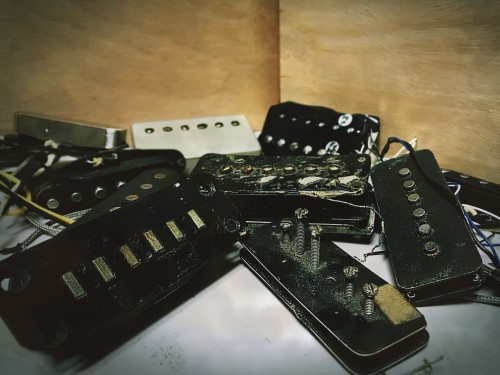The mystery of the ‘59 Jazzmaster tone.

I still see discussions on internet forums about whether the wood in an electric guitar has any effect on its tone, or if it’s all in the pickup. There are some people who insist the instrument itself makes no difference in its tone.
There was a good series of articles a few years ago in the Guild of American Luthiers quarterly magazine about how just the body shape of a solid body electric guitar affects nodal patterns of vibration at different frequencies—just the shape of the body!
Continue reading


